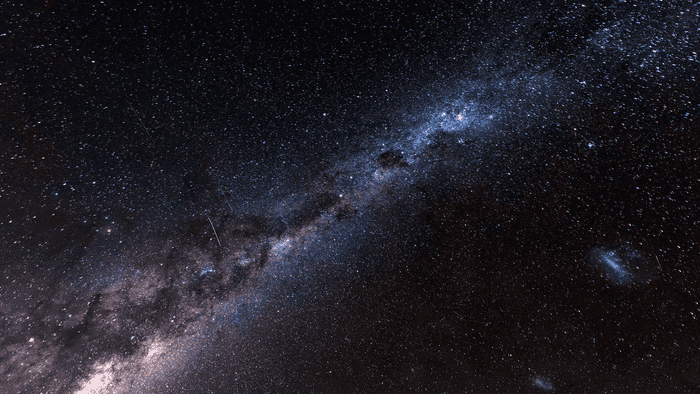
For the first time ever astronomers have located a fast radio burst (FRB) that regularly repeats itself. Don't know what an FRB is? Well, we'll try our best to explain it to you.
Science Alert defines them as mysterious deep space signals that are unpredictable. CNN adds that they're millisecond-long radio wave bursts from space. They can belt out individually or over multiple times. And those that do repeat do so with no visible pattern, which means they're not easy to study.
As we already said twice, up until now researchers had been unable to find one that would repeat with any consistency. But that changed when people working on behalf of the Canadian Hydrogen Intensity Mapping Experiment/Fast Radio Burst Project collaboration picked up on a pattern of bursts that occurred every 16.35 days. Those bursts would come during a four-day period in which they would pop off once or twice per hour. But then they'd go dormant for the next 12 days.
Also those bursts came from a source sitting half a billion light-years from Earth.
The researchers recorded this observation over a period that stretched from September 16, 2018 until October 30, 2019. Those findings were put into a pre-printed arXiv, so they're yet to reach the end of the peer-review process.
The researchers hope that they can trace back the origin of the bursts to learn what they're being caused by. CNN adds that they've successfully traced single and repeating FRBs to "very different sources," which just makes it all the more confusing.
One repeating burst was reported to have happened in a small dwarf galaxy that contained stars and metals. Another's source was traced back to an arm of a Milky Way-esque galaxy.
Researchers theorized what could be causing the bursts, including an orbital motion of a star. Another paper, authored by people who consulted with the original research team, theorized that it could be coming from a neutron star, which are the smallest in the universe. For reference, the diameters of neutron stars are similar to the size of Chicago, Atlanta, or whatever other city you can compare to those two.
Researchers think that learning more about FRBs can lead to a better understanding of the universe. If they can trace more then they think it'll help them learn how matter is dispensed across space. Could the signals be coming from aliens? Probably not. "If it were an alien beacon, I would think it would emit more quickly because a 16-day period is not efficient for communication," Netherlands Institute for Radio Astronomy's Leon Oostrum said to New Scientist. "Imagine getting one signal every 16 days — it would take forever to get a message."
If you found any of that interesting, or it made sense in some way (congrats), here's the researcher's findings in a very long PDF form.
